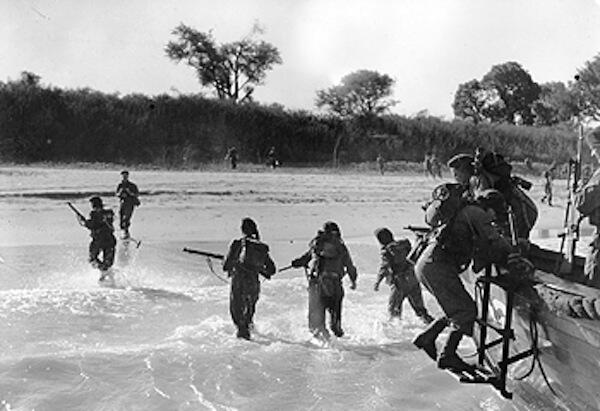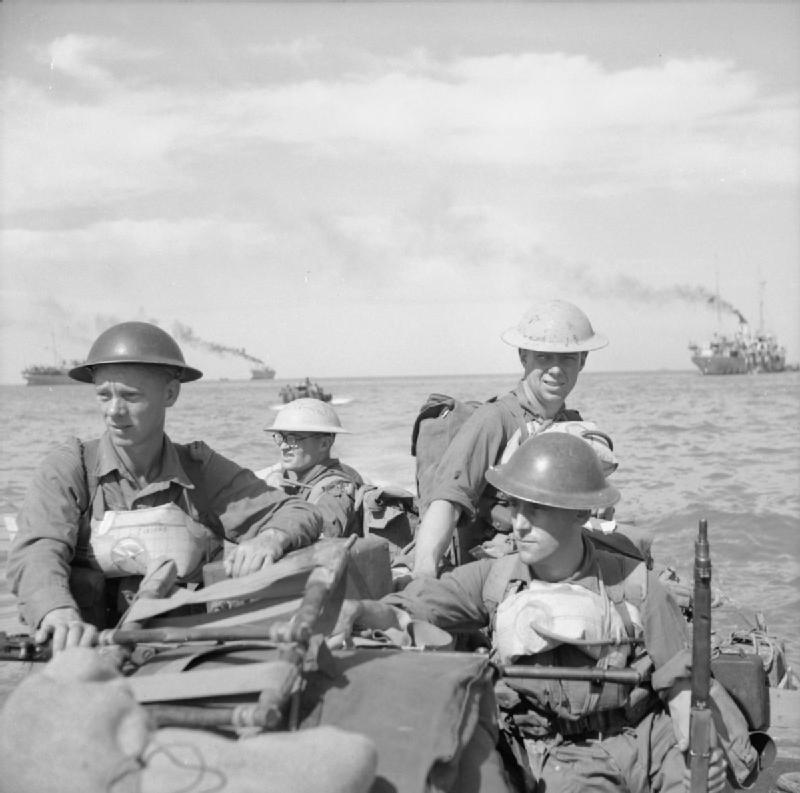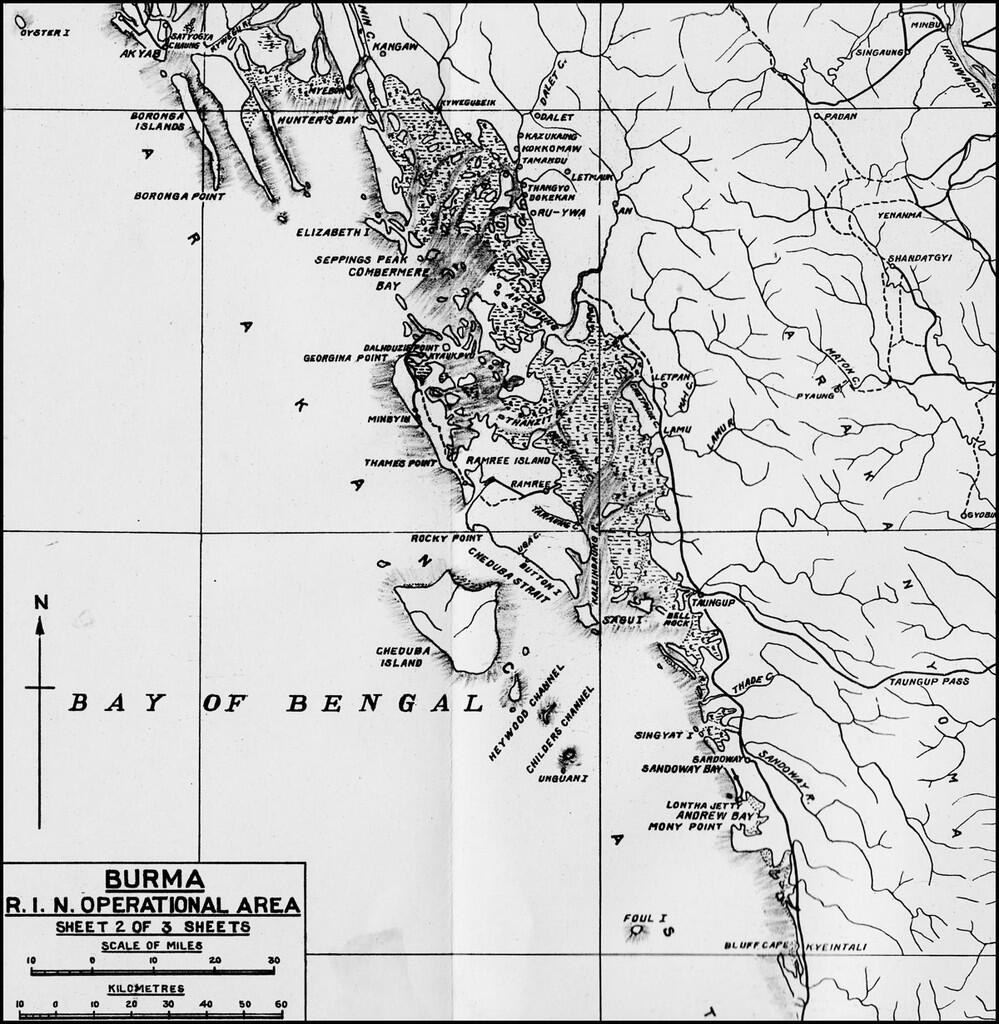TS
reyronld
Ramree Island Battles: Peran Buaya dalam perang melawan Jepang.
The largest number of human deaths by an animal in a single attack may have occurred during the Battle of Ramree Island, on February 19, 1945, in Burma. Nine hundred Japanese soldiers attempted to retreat from a Royal Navy attack across ten miles of mangrove swamps inhabited by thousands of Saltwater Crocodiles. Twenty soldiers were later captured alive by the British, and almost five hundred escaped, but many of the remainder may have been eaten by the crocodiles, although it is impossible to know how many deaths can be directly attributed to the crocodiles instead of to combat-related causes or thirst. The hellish experience of the retreating soldiers was compounded by huge numbers of scorpions and tropical mosquitoes.
The naturalist Bruce Wright, who was fighting with the British, claimed that the crocodiles attacked and ate numerous soldiers:
“That night was the most horrible that any member of the motor launch crews ever experienced. The scattered rifle shots in the pitch black swamp punctured by the screams of wounded men crushed in the jaws of huge reptiles, and the blurred worrying sound of spinning crocodiles made a cacophony of hell that has rarely been duplicated on earth. At dawn the vultures arrived to clean up what the crocodiles had left…Of about 1,000 Japanese soldiers that entered the swamps of Ramree, only about 20 were found alive.”
However, these claims are disputed as about, about 500 Japanese soldiers escaped from Ramree despite the intense blockade instituted to stop them. If Wright’s claim is true, however, the Ramree crocodile attacks would be the worst in recorded history.
Note: The Guinness Book of Records lists the Ramree crocodile attacks under the heading “The Greatest Disaster Suffered from Animals”.
During World War II, Ramree Island off the coast of Burma was the site of a number of military battles, but the truly terrifying action only began after the military maneuvers ended.
On January 26, 1945, British troops made their way to Ramree Island so that they could establish a new airbase. However, first they had to drive off the Japanese invasion force which had already claimed the island. After a bloody but successful campaign against the Japanese, the British soldiers managed to drive nearly 1,000 enemy combatants into the dense mangrove swamp that covered some ten miles of Ramree. While this may have seemed a fine opportunity to slip into the wilderness and regroup, most of the Japanese soldiers would never be heard from again.
Unfortunately for the fleeing men, the mangrove jungle on Ramree Island is home to an unknown number of the largest reptilian predator in the world — the saltwater crocodile. These prehistoric holdovers can grow to over 20 feet in length and over 2,000 pounds in some cases, and although examples that size are rare, even a mid-sized crocodile of the species could easily kill a full grown adult human.
In addition, saltwater crocodiles are far from a misunderstood monster. The crocodiles have a long history of attacking humans who wander into their habitats, seeing them as little more than taller, more awkward prey. So when nearly 1,000 panicked soldiers came dripping blood and sweat into the cramped confines of the Ramree mangrove swamp, the giant lizards likely had the feast of their lives.
Around 500 Japanese soldiers are thought to have escaped those mangrove swamps, and 20 of them were eventually recaptured by the British forces who had set up a perimeter around the thick wilderness. However there were around 500 more of the escaping men who never left the swamp. The survivors are reported to have told horrific tales of dozens of crocodiles attacking the soldiers en masse, and appearing out of seemingly nowhere to drag off some poor soul. The nights were said to have been filled with dire screams, gunfire, and the sounds of animal attacks.
The story of the Ramree massacre was reported in a number of papers, but the tale is still largely apocryphal. However this has not stopped the Guinness Book of World Records to name the incident the "Most Number of Fatalities in a Crocodile Attack." A dubious distinction for a horrible event, no matter the real numbers.
Pas liburan kemarin lagi nonton NatGeo tapi lupa acara apa, di episode tersebut sempet diangkat cerita ini. Ada beberapa pokok pikiran yg ingin TS highlight dari peristiwa ini:
1. Tercatat dalam Guinness book of World record sebagai pembantaian oleh buaya terhadap manusia dengan jumlah terbesar dalam 1 peristiwa
2. Konon Tentara Jepang sudah dikasih kesempatan menyerah oleh Tentara Sekutu/Inggris tapi mereka tetap gk mau.
3. Artileri, peluru, pasukan gabungan sekutu, bahkan penyakit tidak dapat menggoyahkan semangat tempur Tentara Jepang, hanya buaya yg bisa bikin mereka lari tunggang langgang(setidaknya pada peristiwa ini)
4. Dari 1000 tentara Jepang yg bertahan di Pulau tersebut, hanya 20 yg confirmed selamat krn menyerah(krn sudah hopeless), sedangkan 500 meloloskan diri tapi jumlahnya tidak confirmed, dan sisanya mati dimakan buaya(bisa jadi lebih dari 500 krn yg lolos tidak confirmed 500).
5. Sebenarnya suatu peristiwa yg menurut TS sangat memorable karena baru kali ini(menurut TS) binatang liar berperan secara signifikan dalam mengubah jalannya suatu pertempuran, tapi herannya kok sama hollywood gk pernah diangkat ke layar lebar ya?(atau mungkin sudah pernah?)
Sekian, mungkin agan2 yg lain ingin menambahkan atau koreksi? silakan.
The naturalist Bruce Wright, who was fighting with the British, claimed that the crocodiles attacked and ate numerous soldiers:
“That night was the most horrible that any member of the motor launch crews ever experienced. The scattered rifle shots in the pitch black swamp punctured by the screams of wounded men crushed in the jaws of huge reptiles, and the blurred worrying sound of spinning crocodiles made a cacophony of hell that has rarely been duplicated on earth. At dawn the vultures arrived to clean up what the crocodiles had left…Of about 1,000 Japanese soldiers that entered the swamps of Ramree, only about 20 were found alive.”
However, these claims are disputed as about, about 500 Japanese soldiers escaped from Ramree despite the intense blockade instituted to stop them. If Wright’s claim is true, however, the Ramree crocodile attacks would be the worst in recorded history.
Note: The Guinness Book of Records lists the Ramree crocodile attacks under the heading “The Greatest Disaster Suffered from Animals”.
Spoiler for Source:
During World War II, Ramree Island off the coast of Burma was the site of a number of military battles, but the truly terrifying action only began after the military maneuvers ended.
On January 26, 1945, British troops made their way to Ramree Island so that they could establish a new airbase. However, first they had to drive off the Japanese invasion force which had already claimed the island. After a bloody but successful campaign against the Japanese, the British soldiers managed to drive nearly 1,000 enemy combatants into the dense mangrove swamp that covered some ten miles of Ramree. While this may have seemed a fine opportunity to slip into the wilderness and regroup, most of the Japanese soldiers would never be heard from again.
Unfortunately for the fleeing men, the mangrove jungle on Ramree Island is home to an unknown number of the largest reptilian predator in the world — the saltwater crocodile. These prehistoric holdovers can grow to over 20 feet in length and over 2,000 pounds in some cases, and although examples that size are rare, even a mid-sized crocodile of the species could easily kill a full grown adult human.
In addition, saltwater crocodiles are far from a misunderstood monster. The crocodiles have a long history of attacking humans who wander into their habitats, seeing them as little more than taller, more awkward prey. So when nearly 1,000 panicked soldiers came dripping blood and sweat into the cramped confines of the Ramree mangrove swamp, the giant lizards likely had the feast of their lives.
Around 500 Japanese soldiers are thought to have escaped those mangrove swamps, and 20 of them were eventually recaptured by the British forces who had set up a perimeter around the thick wilderness. However there were around 500 more of the escaping men who never left the swamp. The survivors are reported to have told horrific tales of dozens of crocodiles attacking the soldiers en masse, and appearing out of seemingly nowhere to drag off some poor soul. The nights were said to have been filled with dire screams, gunfire, and the sounds of animal attacks.
The story of the Ramree massacre was reported in a number of papers, but the tale is still largely apocryphal. However this has not stopped the Guinness Book of World Records to name the incident the "Most Number of Fatalities in a Crocodile Attack." A dubious distinction for a horrible event, no matter the real numbers.
Spoiler for Source 2:
Spoiler for Landing:
Spoiler for Landing 2:
Spoiler for Ramree Croc:
Spoiler for Map:
Pas liburan kemarin lagi nonton NatGeo tapi lupa acara apa, di episode tersebut sempet diangkat cerita ini. Ada beberapa pokok pikiran yg ingin TS highlight dari peristiwa ini:
1. Tercatat dalam Guinness book of World record sebagai pembantaian oleh buaya terhadap manusia dengan jumlah terbesar dalam 1 peristiwa
2. Konon Tentara Jepang sudah dikasih kesempatan menyerah oleh Tentara Sekutu/Inggris tapi mereka tetap gk mau.
3. Artileri, peluru, pasukan gabungan sekutu, bahkan penyakit tidak dapat menggoyahkan semangat tempur Tentara Jepang, hanya buaya yg bisa bikin mereka lari tunggang langgang(setidaknya pada peristiwa ini)
4. Dari 1000 tentara Jepang yg bertahan di Pulau tersebut, hanya 20 yg confirmed selamat krn menyerah(krn sudah hopeless), sedangkan 500 meloloskan diri tapi jumlahnya tidak confirmed, dan sisanya mati dimakan buaya(bisa jadi lebih dari 500 krn yg lolos tidak confirmed 500).
5. Sebenarnya suatu peristiwa yg menurut TS sangat memorable karena baru kali ini(menurut TS) binatang liar berperan secara signifikan dalam mengubah jalannya suatu pertempuran, tapi herannya kok sama hollywood gk pernah diangkat ke layar lebar ya?(atau mungkin sudah pernah?)
Sekian, mungkin agan2 yg lain ingin menambahkan atau koreksi? silakan.
Diubah oleh reyronld 04-08-2014 08:32
tien212700 memberi reputasi
1
22.3K
90
Thread Digembok
Urutan
Terbaru
Terlama
Thread Digembok
Komunitas Pilihan



